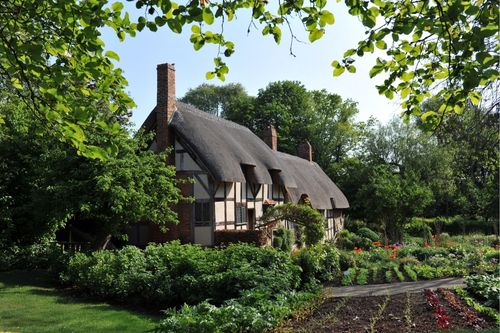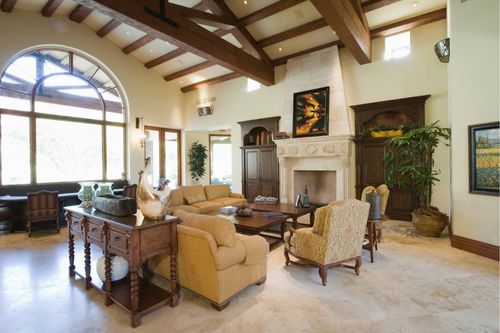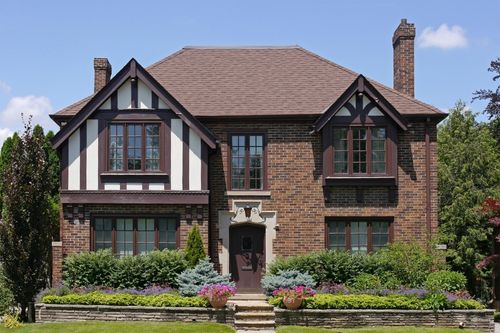
What Is a Tudor Style House?
[ad_1]
One look at a Tudor style house and you’re instantly transported to the English countryside. This distinct architecture dates back hundreds of years, borrowing elements of Renaissance and Gothic design, and later experienced a revival in the United States that continued to grow in popularity through the mid-twentieth century. Similar to cottage homes, their medieval imagery evokes a storybook charm, and their unique combination of materials makes for a truly signature look.

Image Source: Getty Images – Image Credit: oversnap
Features of Tudor Style Houses
Known for their brown-and-white color scheme, Tudor style houses are typically built from stone or bricks, with a façade of stucco and exposed timbering framing. The framing creates straight lines that connect each level of the home, giving it a sense of geometry. Their steep-pitched, intersecting gabled roofs are tailor-made for climates that experience high levels of precipitation; snow slides off before accumulating, and rainwater has a natural path to the gutter system.

Image Source: Getty Images – Image Credit: IPGGutenbergUKLtd
From the outside of a Tudor home, you can imagine sitting around the hearth under exposed wood ceiling beams, taking in the cozy atmosphere as the fireplace crackles. And your imagination would be spot on! A large fireplace is a central feature of these homes, given that they were the primary heating source for households early on in their history. Arched entryways with stonework accents, decorative chimneys, and narrow, closely grouped windows are also defining features of Tudor architecture.

Image Source: Getty Images – Image Credit: peterspiro
Once World War II-era housing development began to shift toward addressing suburban sprawl affordably, the masonry-heavy Tudor style house became less popular. However, they are still found throughout the U.S. today.
To learn more about the various styles of home design, visit our Architectural Styles page:
Windermere – Architectural Styles
Featured Image Source: Getty Images – Image Credit: quackersnaps
!function(f,b,e,v,n,t,s)
{if(f.fbq)return;n=f.fbq=function(){n.callMethod?
n.callMethod.apply(n,arguments):n.queue.push(arguments)};
if(!f._fbq)f._fbq=n;n.push=n;n.loaded=!0;n.version=’2.0′;
n.queue=[];t=b.createElement(e);t.async=!0;
t.src=v;s=b.getElementsByTagName(e)[0];
s.parentNode.insertBefore(t,s)}(window, document,’script’,
‘https://connect.facebook.net/en_US/fbevents.js’);
fbq(‘init’, ‘481214665657385’);
fbq(‘track’, ‘PageView’);
[ad_2]
Source link







